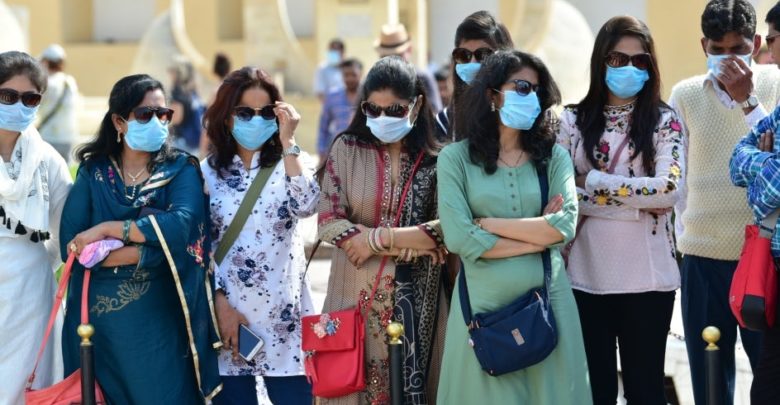Why have Kerala’s COVID-19 cases not decreased as quickly as those in other states?

Kerala has been reporting daily COVID-19 cases ranging from 10,000 to 15,000 for the past 25 days, with no dips. Kerala is one of the few states in India with a high number of COVID-19 cases in recent weeks – as many as 13,772 people tested positive for coronavirus on July 8. The daily caseload has been steadily declining in many other parts of the country. On July 8, Maharashtra, which has had the highest number of COVID-19 cases since the pandemic began, reported 9,083 COVID-19 cases.
According to the Ministry of Health and Family Welfare, Maharashtra had the most active COVID-19 cases (1,17,869) as of July 8, followed by Kerala (1,08,400). When compared to the previous day’s data, Maharashtra’s total active COVID-19 cases increased by 333, while Kerala’s active cases increased by 3,823, the highest in the country for that day. It is also worth noting that the number of deaths in Kerala is lower than in Maharashtra, and the rate of recovery is higher than in other states.
In addition, while Kerala’s daily COVID-19 cases remain high, they have been plateauing (a period of stability) since mid-June, while other states are declining. For example, during the peak of COVID-19 infections in the country, between May 1 and 7, Karnataka and Kerala recorded an average of 46,045 and 36,239 daily cases, respectively. Between June 30 and July 6, Karnataka and Kerala recorded an average daily case count of 2,646 and 12,226 respectively.
The abrupt rise and fall COVID-19 cases in places like Delhi and Karnataka are due to the virus’s rapid spread, and as the number of people infected grows, a threshold immunity is reached. “To put it simply, there are fewer people left to infect, resulting in a sharp decline. “Another way to reduce the number of cases is to implement a fairly strict lockdown,” says the epidemiologist.
According to health experts, Kerala was largely able to contain the sudden spike by slowing the pandemic’s curve. “While most states saw a rapid change in the pandemic’s curve in the first wave, with a rapid rise and fall,” says Kochi-based rheumatologist Dr Padmanabha Shenoy, who has been analysing COVID-19 data.
Dr. Arun NM, a Palakkad-based Internal Medicine expert who has been following the COVID-19 data, found a few parallels between the first and second waves in Kerala and other states. Kerala only saw the first wave of high COVID-19 cases after September 2020, when other states were reporting a decrease in daily infections.
Kerala, unlike other states, did not experience a rapid increase in cases during the first wave. The same thing is happening in the second wave. Kerala’s daily COVID-19 cases plateaued for a few months in the first wave, from around 5,000 to 6,000 cases between November 2020 and January 2021. “By March, the daily cases had dropped to the 2,000 range,” explains Dr. Arun.
Dr. Shenoy agrees as well. He claims that, unlike Kerala, most states are seeing a rapid decline in COVID-19 cases because they are supposedly on the verge of acquiring herd immunity through virus exposure. Exposure to the virus, on the other hand, is not a long-term or safe yardstick for achieving herd immunity.
Herd immunity provides a proportion of the population with indirect protection against a disease based on previous exposure or vaccination. However, because the virus is constantly mutating and people with weakened immune systems can become infected again, vaccination provides better protection against SARS-CoV-2. Kerala had administered 1.51 crore doses of COVID-19 vaccines as of July 7, covering 43 percent of the population over the age of 18 with a single dose and only 14 percent with two doses.
Dr. Muilyil does point out, however, that due to new coronavirus variants such as Delta, the herd immunity level required has risen to slightly more than 80%. “However, as vaccine coverage increases, the mortality rate should not rise,” Dr. Jayaprakash says.
While the daily cases during the plateau period in the first wave ranged between 5,000 and 6,000, this has more than doubled in the second wave, ranging between 10,000 and 15,000. However, because the state has largely been able to steadily expand its healthcare requirements, the active cases have yet to put strain on the state’s health infrastructure.“That is why the plateau is no longer a cause for concern. “It becomes a concern when the critical care units become overcrowded,” says Dr. Arun.
Meanwhile, experts warn that an exponential increase in COVID-19 cases would be cause for concern. “When a consistent range of cases is reported for weeks, the pandemic curve is called a plateau. It will be this way for a few weeks before normalcy returns. However, because the cases are already high, it becomes a problem if there is a spike in cases before the pandemic curve declines,” said Dr Sulphi Nooh, a member of the Indian Medical Association (IMA).
Dr. Arun believes that the current plateau will last for another one or two months. However, he sees this plateau as a benefit. “If we can get the maximum number of people vaccinated during this time, before the next spike, it will be beneficial for us,” he says. According to health experts, conducting seroprevalence surveys — estimating the proportion of the population that has antibodies against coronavirus — at this point can also be an effective method of understanding the pandemic’s trajectory.
Experts also emphasise that during this time, lockdown restrictions and relaxations should be implemented more scientifically. “If the current perfunctory control continues, Kerala will revert to the state we saw after the Assembly elections, when cases began to rise again. In such a case, the number of cases will rise to 30,000-40,000 (as opposed to the current daily average of 12,000),” says Dr Sulphi.
Many people also believe that the implementation of basic regulations – such as physical separation, wearing face masks, and, most importantly, contact tracing – has deteriorated in Kerala.
Meanwhile, the Union Health Ministry on July 7 asked officials in nine states with high COVID-19 cases — Kerala, Arunachal Pradesh, Assam, Manipur, Meghalaya, Nagaland, Odisha, Tripura, and Sikkim — to ramp up testing and vaccination, plan healthcare infrastructure effectively, follow COVID-19-appropriate behaviour, and provide effective clinical management.






